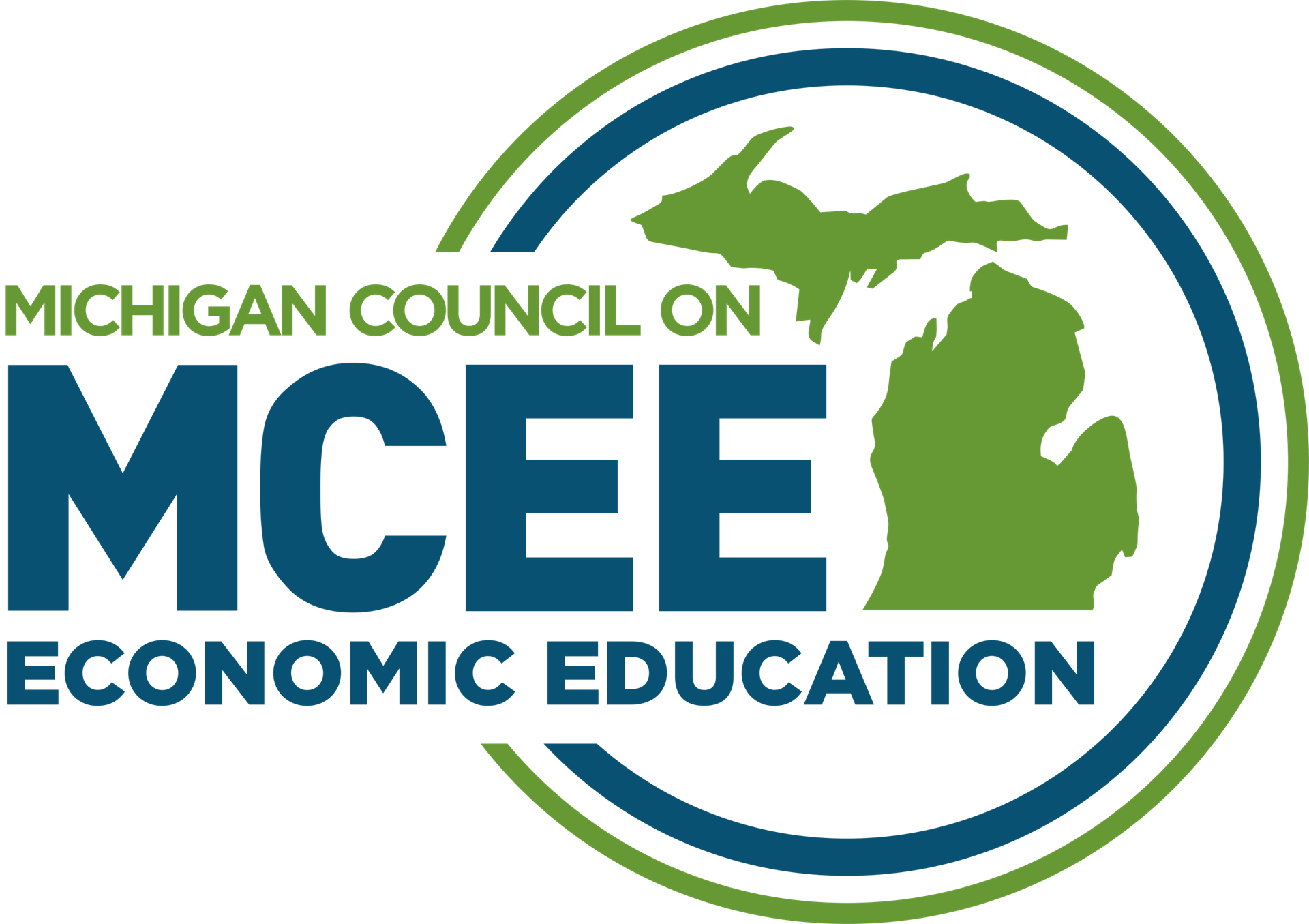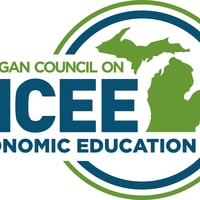MICHIGAN COUNCIL ON ECONOMIC EDUCATION |
ELEMENTARY & MIDDLE SCHOOL |
HIGH SCHOOL |
ECONOMICS LIVEBINDER |
Have a resource we should add to our collection? Need some help teaching a concept? Ask a question or leave a comment in the forum at the bottom of the page!
TOPICS | ASSOCIATED STANDARDS |
ECONOMIC WAY OF THINKING | 1.1.1 Scarcity, Choice, Opportunity Costs, Incentives – Using examples, explain how scarcity, choice, opportunity costs, and incentives affect decisions made by households, businesses, and governments. 1.1.3 Marginal Analysis – Weigh marginal benefits and marginal costs in decision making. |
SUPPLY & DEMAND | 1.3.1 Supply and Demand - Use the laws of supply and demand to explain household and business behavior. (e.g., determinants of demand and determinants of supply) 1.3.2 Price, Equilibrium, Elasticity, and Incentives – Analyze how prices change through the interaction of buyers and sellers in a market including the role of supply, demand, equilibrium, elasticity, and explain how incentives (monetary and non-monetary) affect choices of households and economic organizations. 3.2.4 The Global Economy and the Marketplace – Analyze and describe how the global economy has changed the interaction of buyers and sellers.
|
ECONOMIC SYSTEMS | 3.1.3 Comparing Economic Systems - Compare and contrast the characteristics, advantages, and disadvantages of traditional, command, market, and mixed economic systems. (e.g. GDP, inflation, unemployment.) |
ECONOMIC INDICATORS | 2.1.2 Economic Indicators - Using a number of indicators, such as GDP, per capita GDP, unemployment rates, and consumer price index, analyze the current and future state of an economy. 2.2.1 Government Involvement in the Economy – Evaluate the three macroeconomic goals of an economic system (stable prices, low unemployment, and economic growth). |
FISCAL POLICY | 1.4.3 Government Revenue and Services - Analyze the ways in which local and state governments generate revenue and use that revenue to supply public services. 2.2.2 Government Revenue and Services - Evaluate the ways in which the federal government generates revenue on consumption, income, and wealth, and uses that revenue to supply government services and public goods, and protect property rights. (e.g., parks and highways, national defense, social security, Medicaid, Medicare.) 2.2.3 Fiscal Policy and its Consequences – Analyze the consequences – intended and unintended – of using various tax and spending policies to achieve macroeconomic goals of stable prices, low unemployment, and economic growth. |
MONETARY POLICY | 2.2.4 Federal Reserve and Monetary Policy – Explain the roles and responsibilities of the Federal Reserve System and compare and contrast the consequences – intended and unintended – of different monetary policy actions of the Federal Reserve Board as a means to achieve macroeconomic goals of stable prices, low unemployment, and economic growth. |
TRADE & SPECIALIZATION | 3.1.1 Developing Nations - Assess how factors such as availability of natural resources, investments in human and physical capital, technical assistance, public attitudes and beliefs, property rights, and free trade can affect economic growth in developing nations. 3.1.2 International Organizations and the World Economy – Evaluate the diverse impact of trade policies of the World Trade Organization, World Bank, or International Monetary Fund on developing economies of Africa, Central America, or Asia, and on the developed economies of the United States and Western Europe. 3.2.1 Absolute and Comparative Advantage – Use the concepts of absolute and comparative advantage to explain why goods and services are produced in one nation or locale versus another. 3.2.2 Domestic Activity and World Trade – Assess the impact of trade policies, monetary policy, exchange rates, and interest rates on domestic activity and world trade. (e.g., tariffs, quotas, export subsidies, product standards, other barriers.) 3.2.3 Exchange Rate and World Trade – Analyze the effects on trade of a change in an exchange rate between two currencies. 3.2.4 The Global Economy and the Marketplace – Analyze and describe how the global economy has changed the interaction of buyers and sellers. |
ENTREPRENEURSHIP | 1.1.2 Entrepreneurship - Analyze the risks and rewards of entrepreneurship and associate the functions of entrepreneurs with alleviating problems associated with scarcity. |
MARKET STRUCTURES | 1.2.2 Market Structures - Identify the characteristics of perfect competition, monopolistic competition, oligopoly, and monopoly market structures. (e.g. number of producers, similarity of products, barriers to entry, control over prices.) |
PERSONAL FINANCE | 4.1.2 Buying Goods and Services - Describe the factors that consumers may consider when purchasing a good or service, including the costs, benefits, and the role of government in obtaining the information. 4.1.3 Saving - Identify the incentives people have to set aside income for future consumption, and evaluate the impact of time, interest rates, and inflation upon the value of savings. 4.1.4 Using Credit - Evaluate the benefits, costs, and potential impacts of using credit to purchase goods and services. |
INVESTING | 4.1.5 Financial Investing - Analyze the risks, expected rate of return, tax benefits, impact of inflation, role of government agencies, and importance of diversification when investing in financial assets. |
COLLEGE & CAREER | 4.1.1 Earning Income - Conduct research regarding potential income and employee benefit packages, non-income factors that may influence career choice, benefits and costs of obtaining the necessary education or technical skills, taxes a person is likely to pay, and other possible sources of income. (e.g., interest, dividends, capital appreciation, income support from the government, social security) |

.png)
